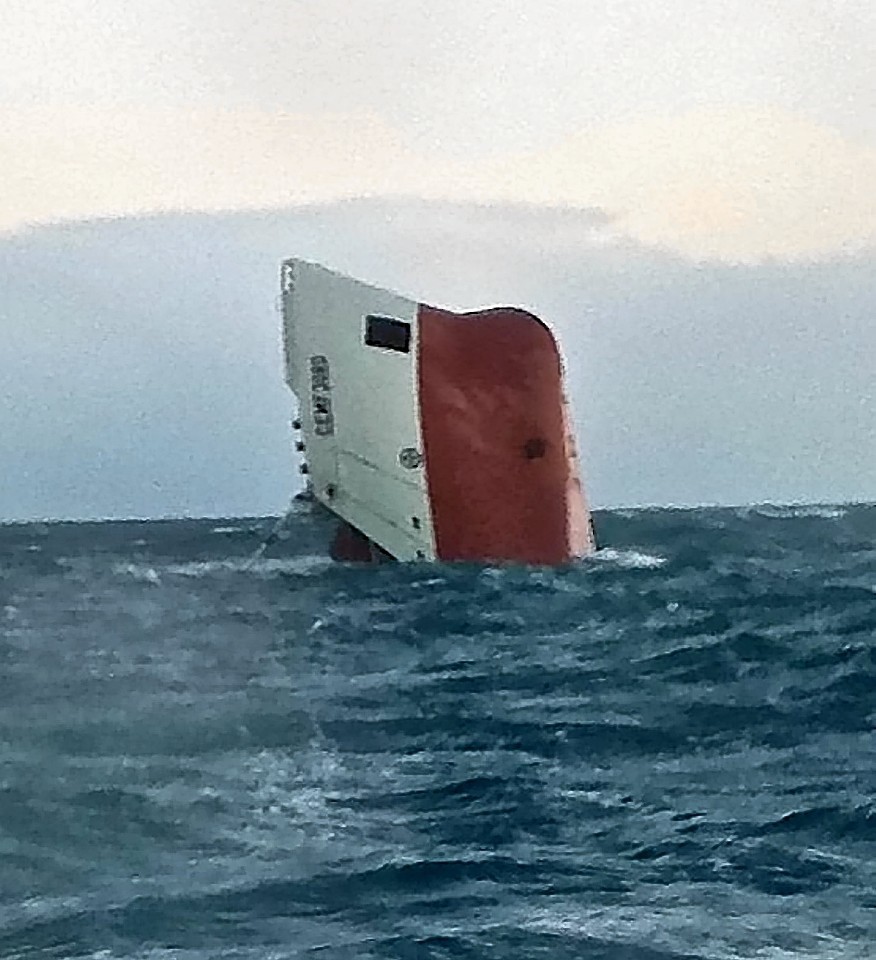The Cemfjord cargo ship tragedy could result in wholesale changes in the way vessels are monnitored in the Pentland.
The Cyprus-registered cement carrier went down off the north of Scotland in January last year, with the loss of eight crew from the Philippines and Poland.
A report published by the Marine Accident Investigations Branch (MAIB) yesterday said the deaths in “extraordinarily violent” sea conditions “could have been avoided”.
It found that Cemfjord was at sea with significant safety deficiencies relating to its rescue boat launching arrangements and bilge pumping system.
The vessel capsized on January 2 2015 – but it was 25 hours before the alarm was raised after its upturned hull was spotted by a passing ferry.
The accident went unnoticed ashore because the vessel’s progress through the Pentland Firth was not being monitored. Shetland Coastguard did not require vessels to report when exiting the voluntary reporting scheme area.
Now, however, safety recommendations have been made to the UK Maritime and Coastguard Agency (MCA) to review the arrangements for the safety of shipping in the treacherous stretch of water.
The MCA is asked to consider making the Pentland Firth voluntary reporting scheme compulsory and whether extreme weather warnings should be broadcast to ships in the area.
Steve Clinch, chief inspector of marine accidents, MAIB, said: “The MAIB investigation found that Cemfjord capsized in extraordinarily violent sea conditions; a fatal hazard that was predictable and could have been avoided.
“The decision to enter the Pentland Firth, rather than seek shelter, was almost certainly a result of poor passage planning, an underestimation of the severity of the conditions and perceived or actual commercial pressure to press ahead with the voyage.
“Critically, this decision will also have been underpinned by an unwillingness to alter course across the heavy seas after the experience of a cement cargo shift in similar circumstances about three months before the accident.”
He continued: “The appalling conditions and rapid nature of the capsize denied the crew an opportunity to issue a distress message or to escape from their ship.
“Although not a causal factor of the accident, it was also established that Cemfjord was only at sea because of Flag State approved exemptions from safety regulations. This tragic accident is a stark reminder of the hazards faced by mariners at sea and the factors that can influence decision making in such treacherous circumstances.”
The crew have never been found and the wreck, which is lying on the seabed at 270ft below the surface, has been declared a sea grave.
A beacon did not work almost certainly because it became trapped in the upturned hull.
A spokeswoman for the MCA said:”The Maritime & Coastguard Agency has received the MAIB report and will be considering its recommendations carefully.”
The ship’s owner, Brise of Hamburg, has been advised to further improve the safety of its fleet and the Republic of Cyprus’ Department of Merchant Shipping to enhance the management of its safety regulation exemption process.
Tony Redding, a spokesman for Brise, said: “At this time we wish to express, once again, our condolences to the families of those who lost their lives.
“The background to this accident is complex, but the MAIB report and the company’s own investigation have done much to clarify a series of important issues.
“Both investigations reach an identical conclusion on the main cause: the extreme weather and tidal conditions in the Pentland Firth on January 2 2015, and the Master’s decision to proceed with the westbound transit and confront these conditions. We can never know the exact basis on which he took this decision.
“Cemfjord departed on her last voyage in full compliance with Flag State and Classification requirements and, therefore, was in a seaworthy condition. Nevertheless, investigations have shown that the integration between company, Flag State and Class prior to the voyage offer significant scope for positive change.
“The company has made much progress in addressing important issues concerning culture, training and the equipment and maintenance of vessels. This work continues to progress.”
